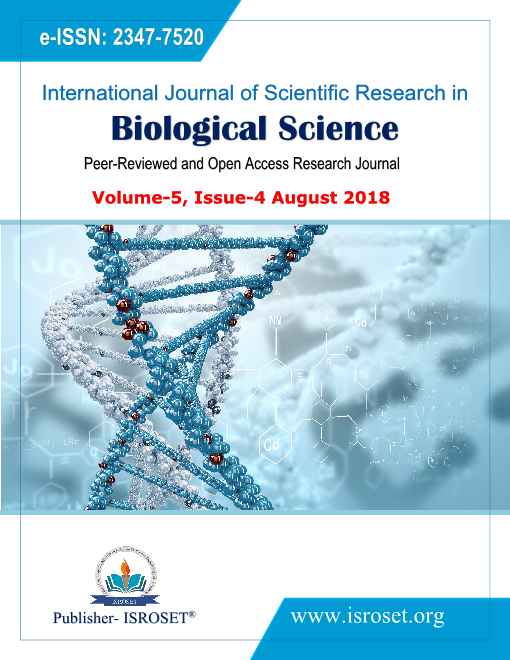Conservation of Plant Biodiversity: Current Strategies and Future Needs
Keywords:
Biodiversity, Deforestation, Invasive species, Conservation, StrategiesAbstract
The issues related to the threats to plant biodiversity and its conservation have not been much highlighted as in the case of animal biodiversity. Out of seven million species of plants and animals living on the earth, there are nearly 3,90,800 plants species. Deforestation, habitat destruction, climate change, invasive species, pollution, mining, river valley projects, human overpopulation and over-harvesting are the major threats to plant biodiversity. This review focuses on effect of biodiversity loss on ecosystems, the need to conserve plant diversity and the present conservation strategies. It also highlights the biodiversity conventions around the world and measures to taken to protect plant diversity globally.
References
José Luiz de Andrade Franco , “The concept of biodiversity and the history of conservation biology: from wilderness preservation to biodiversity conservation” História vol.32 no.2 Franca July/Dec. 2013. http://dx.doi.org/10.1590/S0101-90742013000200003
Suhas J. Vyas , Dipika Kara and Savan Tank “Eco-Physiological Study of Marshy and Sandy Habitats of Kachchh”International Journal of Scientific Research in Biological Sciences Vol.4, Issue.6, pp.1-7, December (2017)
Gerardo Ceballos, Andrés García and Paul R. Ehrlich, “The Sixth Extinction Crisis :Loss of Animal Populations and Species”, Journal of Cosmology, 2010, Vol 8, 1821-1831. JournalofCosmology.com, June, 2010
Wandersee JH, EE Schussler , “Preventing plant blindness”, Am Biol Teach 61:82–86,1999
Brummitt, N.A., Bachman, S.P., Griffiths-Lee, , “Green plants in the red: A baseline global assessment for the IUCN Sampled Red List Index for plants”, PLoS ONE 10(8): e0135152. doi:10.1371/journal.pone.0135152, 2015
Cardinale B.J., “The functional role of producer diversity in ecosystems”, Am J Bot. 2011 Mar;98(3):572-92. doi: 10.3732/ajb.1000364. Epub 2011 Mar 2
Balvanera P, Pfisterer AB, Buchmann N, He JS, Nakashizuka T, Raffaelli D, Schmid B., “Quantifying the evidence for biodiversity effects on ecosystem functioning and services”, Ecol Lett. 2006 Oct;9(10):1146-56.
Sandra Quijasa, Bernhard Schmidb, Patricia Balvanera, “Plant diversity enhances provision of ecosystem services: A new synthesis”, Basic and Applied Ecology,Volume 11, Issue 7, November 2010, Pages 582-593. https://doi.org/10.1016/j.baae.2010.06.009
David Tilman, Clarence L. Lehman, Kendall T. Thomson, “Plant diversity and ecosystem productivity: Theoretical considerations”, Proc Natl Acad Sci U S A 1997 Mar 4; 94(5): 1857–1861.
Ellis, E.C., Antill, E.C., Kreft, H., (2012) “All is not loss: plant biodiversity in the Anthropocene”, PLoS ONE 7(1): e30535. doi:10.1371/journal.pone.0030535
Pimm, S.L., Joppa, L.N., 2015, “How many plant species are there, where are they, and at what rate are they going extinct?” Ann. Miss. Bot. Gard.100, 170-176
Corlett, R.T., Westcott, D.A., 2013, “Will plant movements keep up with climate change?” , Trends Ecol. Evol. 28, 482-488.
Wanjui, “Biodiversity Conservation Needs and Method to Conserve the Biological Diversity”, J Biodivers Endanger Species 2013, 1:3 DOI: 10.4172/2332-2543.1000113.
Anna Hermann et. al. “The Concept of Ecosystem Services Regarding Landscape Research: A Review” Living Rev. Landscape Res.,5, (2011), 1.
Luis Santamarı´a and Pablo F. Me´ndez, “Evolution in biodiversity policy – current gaps and future needs”, Evolutionary Applications (2011)ISSN 1752-4571 doi:10.1111/j.1752-4571.2011.00229.x
Costanza, R., R. D’arge, R. De Groot, S. Farber, M. Grasso, B. Hannon, K. Limburg et al. 1997. “The value of the world’s ecosystem services and natural capital”, Nature 387:253–260.
Crandall, K. A., O. R. P. Bininda-Emonds, G. M. Mace, and R. K. Wayne. 2000, “Considering evolutionary processes in conservation biology. Trends in Ecology & Evolution” 15:290–295.
Folke, C., S. Carpenter, B. Walker, M. Scheffer, T. Elmqvist, L. Gunderson, and C. S. Holling. 2004, “Regime shifts, resilience, and biodiversity in ecosystem management”, Annual Review of Ecology, Evolution and Systematics 35:557–581.
Nigel Cooper, E. Brady, Helen Steen, Rosalind Bryce ,“Aesthetic and spiritual values of ecosystems: Recognizing the ontological and axiological plurality of cultural ecosystem ‘services’, Ecosystem Services, Volume 21, Part B, October 2016, Pages 218-229.
The Convention on International Trade in Endangered Species of Wild Fauna and Flora, Cites.org
Kayri Havens, Andrea T. Kramer and Edward O. Guerrant Jr., “Getting Plant Conservation Right (Or Not): The Case Of The United States” , Int. J. Plant Sci. 175(1):3–10. 2014 DOI: 10.1086/674103
Ellis, E.C., Antill, E.C., Kreft, H., “ All is not loss: plant biodiversity in the Anthropocene”, PLoS ONE 7(1): e30535. doi:10.1371/journal.pone.0030535, 2012
Myers N (1988), “Threatened biotas: ‘hotspots’ in tropical forests”, Environmentalist 8:187–208
Matthew J. Smith et. al., “Assessing the impacts of international trade on CITES-listed species: Current practices and opportunities for scientific research”, Biological Conservation doi:10.1016/j.biocon.2010.10.018, 2010
Conf. 16.3, CITES Strategic Vision: 2008-2020, The Conference Of The Parties To The Convention
Rosie Cooney, “The Precautionary principle in biodiversity conservation and natural resource management: An issues paper for policy-makers, researchers and practitioners”, IUCN Policy and Global Change Series No. 2
Philippe Gerbeaux, “The Ramsar Convention: a review of wetlands management in New Zealand” Pacific Ecologist summer 2002/2003
Bogdana Vujić , Filip Jovanović and Anđelka Mihajlov, “Mapping IPPC facilities in Vojvodina Province”, The 6th PSU-UNS International Conference on Engineering and Technology (ICET-2013), Novi Sad, Serbia, May 15-17, 2013 University of Novi Sad, Faculty of Technical Sciences
Downloads
Published
How to Cite
Issue
Section
License

This work is licensed under a Creative Commons Attribution 4.0 International License.
Authors contributing to this journal agree to publish their articles under the Creative Commons Attribution 4.0 International License, allowing third parties to share their work (copy, distribute, transmit) and to adapt it, under the condition that the authors are given credit and that in the event of reuse or distribution, the terms of this license are made clear.







